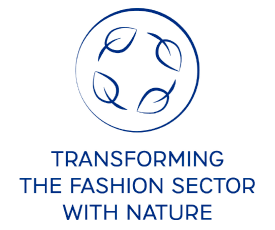IMPLEMENTATION PLAN
Indication of when actions will take place and when targets will be met based on CO and other expert guidance and priority assessments.
Please refer to The Fashion Pact’s Biodiversity Blueprint
WHAT IS AN IMPLEMENTATION PLAN?
Implementation plans detail the activities a company will undertake to achieve their targets, the dates by which the activities will be undertaken, and milestones along the way. The implementation plan could be structured along the pillars of the AR3T FRAMEWORK by describing the activities that will be undertaken to achieve the targets.
The process of developing an implementation plan helps a company think through what will be needed to achieve its targets, who needs to be involved, and how it will incorporate targets into the company culture.
An implementation plan should also include details of how you will ensure that your targets and activities are done in a way that respect human rights and avoid trade-offs wherever possible.
WHY DEVELOP AN IMPLEMENTATION PLAN?
WHO SHOULD DEVELOP AN IMPLEMENTATION PLAN?
HOW CAN A COMPANY DEVELOP AN IMPLEMENTATION PLAN?
ARE THERE ANY TOOLS THAT CAN SUPPORT DEVELOPMENT OF AN IMPLEMENTATION PLAN?
Atlas of Forest Landscape Restoration Opportunities provides maps that can inform your company on some of the best opportunities for forest restoration activities. It allows you to take into account various practical and biodiversity-related considerations. These include the potential forest cover of an area (helping to inform the restoration potential), the current condition (giving an idea of what improvements could be made) and human pressures in the landscape (important to consider in terms of investment vs returns). Note that restoration and offsetting come low down on the AR3T framework in terms of priority, and actions that first avoid, then minimise and finally restore should be targeted before offsetting is considered.
Guidelines for Planning and Monitoring Corporate Biodiversity Performance developed by IUCN, allow companies to set goals/targets based on their major impacts to biodiversity, which are defined in relation to an overall “biodiversity vision” for that company. Once goals and objectives have been set, it provides guidance on the most effective actions you can implement, encouraging you to design a “theory of change” that explains how your actions will turn your targets into a reality.
NCS World Atlas is a tool that shows opportunities for GHG emissions reduction strategies that use natural solutions – it is a branch of the nature-based solutions concept. This tool is not explicitly about biodiversity action planning, however it may be useful for alignment between any climate change and biodiversity goals that you have as a company and to identify actions that can maximise benefits for both. Companies should ensure that any actions taken are not to the detriment of biodiversity overall e.g., some NBS actions include the establishment of non-native plantation forests, which have a negative effect on biodiversity.
BBOP (Business and Biodiversity Offset Platform) includes a network of different organisations and individuals that test and develop biodiversity offsetting and conservation banking approaches for other companies. They have a set of standards that companies can use to adhere to best practices on the implementation phase, to help adhere to the mitigation hierarchy, to support improvments to offsetting methods as part of an action plan, and to support the development of offsetting methods, which are open to verification and validation.
SourceUp connects you with coalitions of stakeholders in the regions where you source commodities, allowing you to collaboratively improve sustainability along your supply chain (including for biodiversity), which is where a significant portion of your impacts are likely to be occurring as a fashion company. At present, it has a limited number of commodities and locations, but it is due to expand its list, and is happy to work directly with companies to expand engagement opportunities for the sector as a whole.
Accountability Framework Initiative (AFI) focusses on biodiversity impacts related to deforestation and conversion of land, based on a set of 12 core principles. Once targets are set, it helps you to define actions which, are mostly focussed on securing zero deforestation/conversion, within your supply chain. The actions defined in relation to this therefore relate most closely to the “avoidance” step of the AR3T framework, which is the most prioritised step.
Biodiversity Guidance Navigation Tool guides users through the different steps outlined by the Capitals Coalition for conducting a Natural Capital Assessment. A Natural Capital Assessment looks at not only the impacts a company is having on nature, but also the dependencies it has. This allows targets to be set that prioritise both the benefits for nature, and the benefits for your company. This tool is specifically designed to help guide through the steps in relation to the biodiversity components of a Natural Capital Assessment, including the “measure, value and apply” step: once you have set targets as per the previous step, this tool will guide you on the best and most effective actions to help achieve those targets.
